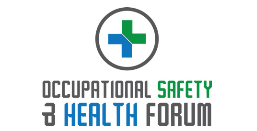The global Environment, Health & Safety (EHS) market is expected to grow from $6.3 billion in 2021 to $8.9 billion by 2026, equivalent to a Compound Annual Growth Rate (CAGR) of 7.4%.
That’s according to a new report from ResearchAndMarkets, which asserts that that COVID has compounded the reality we were already aware of: that every organisation or workplace is associated with some or the other form of risks, where the nature and intensity of the harm caused due to the accidents vary according to the nature of the industry.
Hence, during COVID, it has become necessary for every industry vertical to adhere to government guidelines and stringent regulations for enhancing the safety of the environment and its employees. In particular, the report says that governing bodies and regional federal agencies are proactively mandating the implementation of EHS software across industry verticals to adhere to the environmental and occupational safety standards.
By deployment mode, the cloud segment is set to grow at the higher CAGR during the forecast period. EHS solutions can be deployed on customer premises using the on-premises or cloud-based deployment mode. With advancements in technology, enterprises are seen to prefer the cloud-based EHS as they offer various benefits, such as a pay-per-use model, flexibility, speed in accessibility, and low installation and maintenance costs.
The report also says SMEs prefer adopting cloud-based EHS software solution due to their budget constraints. Adoption of the on-premises solutions requires a separate infrastructure, maintenance charges, and a dedicated resource team. These factors are expected to trigger the adoption of cloud-based solutions among SMEs.
The energy and utilities vertical has witnessed the significant adoption of EHS software solutions because of the evolving EHS laws, regulations, and standards. EHS software solutions ensure regulatory compliances, mitigate operational risks, and quantify and report air emissions from utilities or energy system processes.
These solutions also include sustainability tracking, which takes care of customized KPIs and business metrics. In addition, EHS software solutions comprise an executive dashboard, which helps professionals manage environmental performance, onsite incidents, and energy and utilities use. The energy and utilities vertical primarily includes natural gas, oil, nuclear power, coal, renewable energy, electricity, water, waste, and recycling sectors.
APAC constitutes thriving economies, such as Singapore, Japan, China, India, and Australia, which are expected to register high growth rates in the EHS market. It is expected to witness the highest CAGR during the forecast period. China has witnessed immense industrial growth and is the manufacturing capital of the world. Its government is getting stricter with EHS regulations and compliances. The Social Science Research Council (SSRC) started a program called China Environment and Health Initiative, generating new research on the connection between health, environment, and development in China.
Similarly, countries such as India, Australia, and Japan are also taking several initiatives to implement the EHS solutions. The Government of India and the labor departments of the states and union territories in the country are responsible for the safety and health of workers. The Directorate General of Mines Safety (DGMS) and Directorate General Factory Advice Services and Labor Institutes (DGFASLI) assist the ministry in the technical aspects of OSH in mines, factories, and ports. The Government of Australia is also following the Work Health and Safety Act 2011, which includes all the necessary rules and regulations of EHS.







